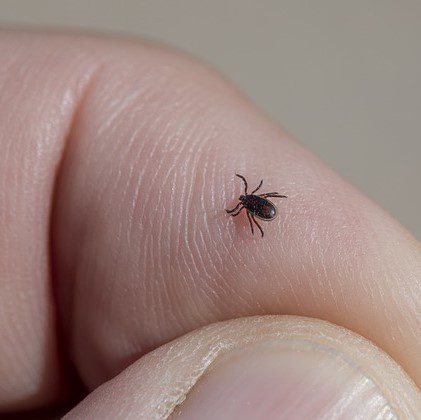A recent article in NewScientist describes Borrelia burgdorferi as a bacterium that is the cause of Lyme disease (borreliosis). The trail of infection begins with wild mice that harbor the bacterium. Ticks (black-legged deer ticks) become infected by feeding on the mice then go on to infect people and animals.
Lyme disease presents an ever-increasing challenge to people living in Europe, North America, and Asia. Initially, it causes rash and flu-like symptoms. Untreated it can cause Lyme arthritis and other long-term illnesses.
The CDC estimates there are approximately 300,000 cases of Lyme disease annually, There has been a dramatic increase of Lyme disease and other tick-borne diseases over the past ten years.
Treatment currently includes antibiotics. Doxycycline is commonly used to treat the infection. But the drug has a disruptive effect on the gut microbiome with symptoms that include diarrhea. In addition, continued use can cause antibiotic resistance.
About the New Drug
Professor Kim Lewis and his team at Boston’s Northwestern University are ‘gearing up’ for the first trial next summer. Lewis explained that their discovery of a chemical that kills the bacterium but does not harm animals may eventually eradicate the disease in the wild.
The team proved this theory by dropping baits laced with hygromycin.
The chemical compound is hygromycin A. Although it is not effective against most bacteria, it is deadly to spirochaete bacteria including B. burgdorferi.
Lewis explained that spirochaete bacteria are shaped like a corkscrew. This enables the bacteria to burrow into tissues. Spirochaete bacteria also cause syphilis and similar diseases. Lewis believes that hygromycin could also be used to treat syphilis.
Hygromycin tested well in animals without harmful effects. It was classified as ‘unusually safe’. A company called FlightPath is currently filing for approval in the U.S. Upon approval, the chemical could be tested in humans.
Doxycycline Baits
Lewis noted the success of a field trial conducted ten years ago with doxycycline baits. Using the same method, his team successfully cleared B. burgdorferi infections. By dropping these baits Lyme disease could be eradicated not only from entire areas but from entire countries.
However, a major drawback offered by various scientists is that using the chemical to that extent would cause a great number of microbes to become antibiotic-resistant.
On the other hand, Lewis questions that theory based on his studies suggesting it is difficult for B. burgdorferi to develop resistance. He points out that hygromycin has features which spirochaetes cannot produce. Lewis explains that mutations blocking the uptake of hygromycin also block spirochaetes from receiving the nutrients.
Looking Forward
Lewis reiterated that Lyme disease is targeted to be eradicated. He said that vaccines are in various stages of development but simply eradicating Lyme disease entirely would be preferable.








